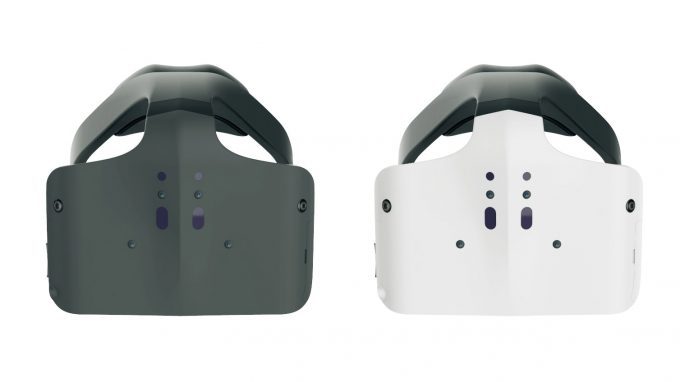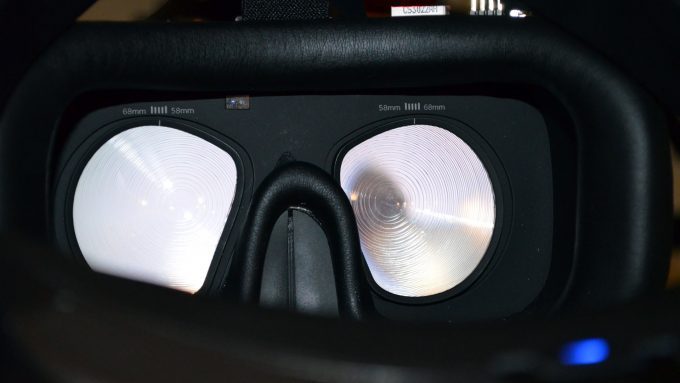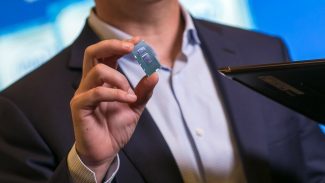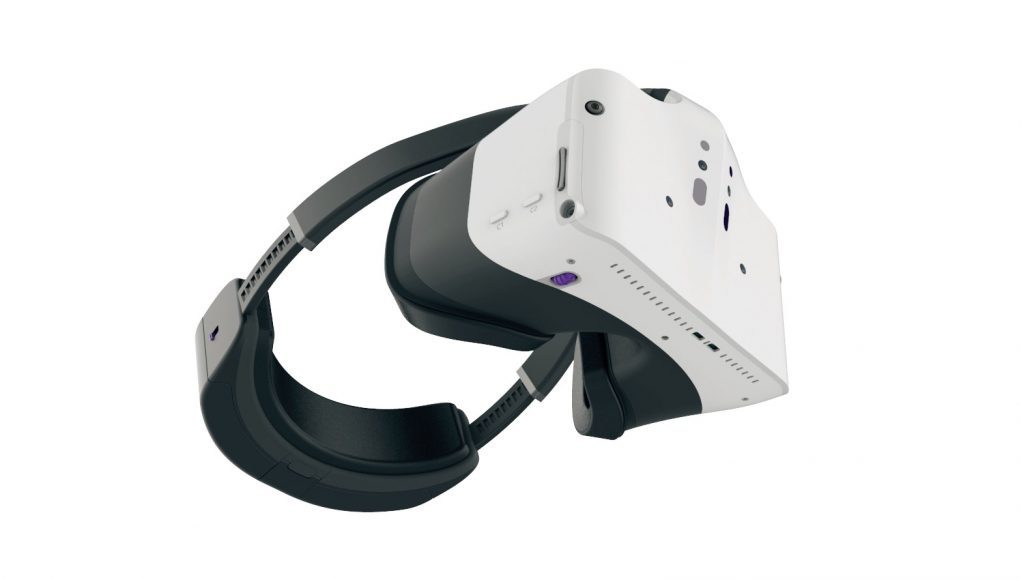Intel says ‘Project Alloy’ is an open reference platform for companies who want to build advanced, all-in-one VR headsets. But the headset itself still in ong going development. Developers working closely with the headset have shared new details on what’s coming in the next version.
Calling Project Alloy just a VR headset is a bit of a misnomer. Not only is it a sensor-laden device capable of understanding the environment around it, it’s actually a full blown x86 head-worn computer running a PC-class Intel processor. You can literally plug it into a monitor and you’ll see a Windows 10 desktop.
Intel says that Project Alloy is an open reference platform; they want to let companies interested in building similar products use it as a starting point for their own headsets (and of course Intel then wants to sell those companies the chips to power those products). But Project Alloy itself is still in ongoing development, and isn’t expected to reach a level of finality until later this year.
While some aspects of the headset have impressed us (like the field of view, inside-out tracking, and is all-in-one nature), there’s still much room for improvement. A new version of the headset is on the way, and developers working closely with the device have filled us in on some of the forthcoming improvements.
Computer Vision Upgrades

Perhaps most importantly, one of the major changes coming to Project Alloy is significantly enhanced computer-vision capabilities. Today’s Alloy prototype uses Intel’s RealSense camera technology for real-time depth mapping, but the high latency, low field of view, and sparse density of that depth data leaves a lot to be desired.
The next Alloy prototype will include a next-generation RealSense camera which will be paired with the dedicated Movidious computer vision processing chip, tech which intel acquired along with the company last year. The combination of these two things should mean much better and much faster depth mapping, which Intel is going to need to pull off its vision of ‘merged reality’, which aims to bring parts of the real world into the virtual environment.
Improved Field of View
 Another incoming change that surprised us is a supposed increase in the headset’s field of view. Intel hasn’t detailed many of the basic specs of the current Project Alloy prototype, including resolution and field of view, but in our hands-on time we were quite pleased with the FoV, which felt comparable to the Vive and Rift. Like those two headsets, the present Alloy prototype is already using Fresnel lenses, and it’s not quite clear exactly what will be done to improve the field of view further, but we certainly welcome any enhancement on that front.
Another incoming change that surprised us is a supposed increase in the headset’s field of view. Intel hasn’t detailed many of the basic specs of the current Project Alloy prototype, including resolution and field of view, but in our hands-on time we were quite pleased with the FoV, which felt comparable to the Vive and Rift. Like those two headsets, the present Alloy prototype is already using Fresnel lenses, and it’s not quite clear exactly what will be done to improve the field of view further, but we certainly welcome any enhancement on that front.
More Power Efficient CPU With Enhanced Integrated Graphics

The next Project Alloy headset will also come equipped with Intel’s latest 7th-gen ‘Kaby Lake’ processors. The company says the new chips are faster and more power efficient than their predecessors, which will be important for the standalone headset’s battery-powered runtime. The chip also has improved on-board graphics performance which is also hugely important as the headset doesn’t have the benefit of hooking up to a powerful desktop GPU.
Project Alloy is already a good start for Intel and the improvements coming in the next prototype promise to make it ever better. Another area we’re hoping to see the company make progress is on the bulk of the headset. Yes, for a completely self-contained device that’s crammed full of 10 individual sensors, it’s pretty compact. But it still needs to get smaller and lighter to become a headset that’s practical for regular long-term use.
Presently, it isn’t clear how much Intel might be able to shrink the device. Physical limitations of lens-focusing capabilities mean headset’s like Project Alloy will always need a certain amount of bulk simply to get the lenses and display positioned correctly, but smarter integration of the onboard electronics and sensors into the head-mount is probably a good next step until advanced display technology can solve the focal-distance issue.







